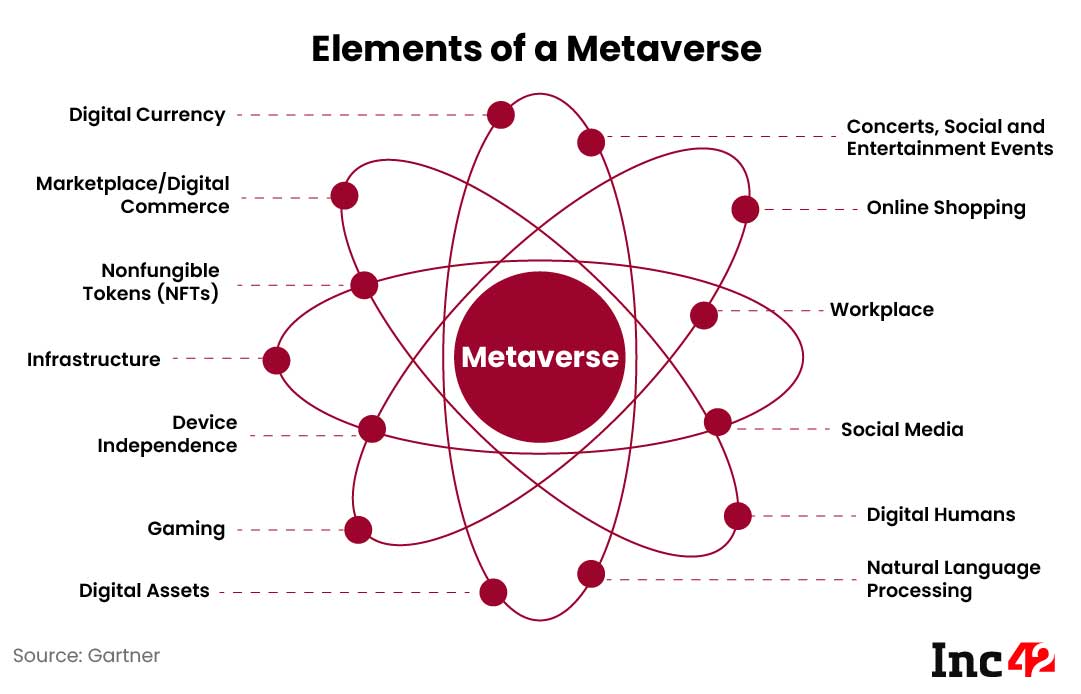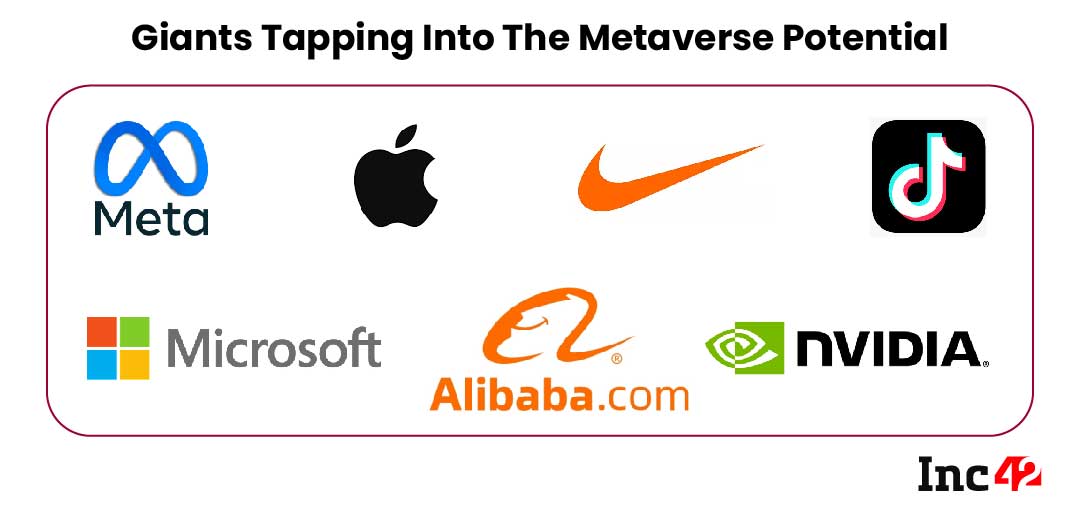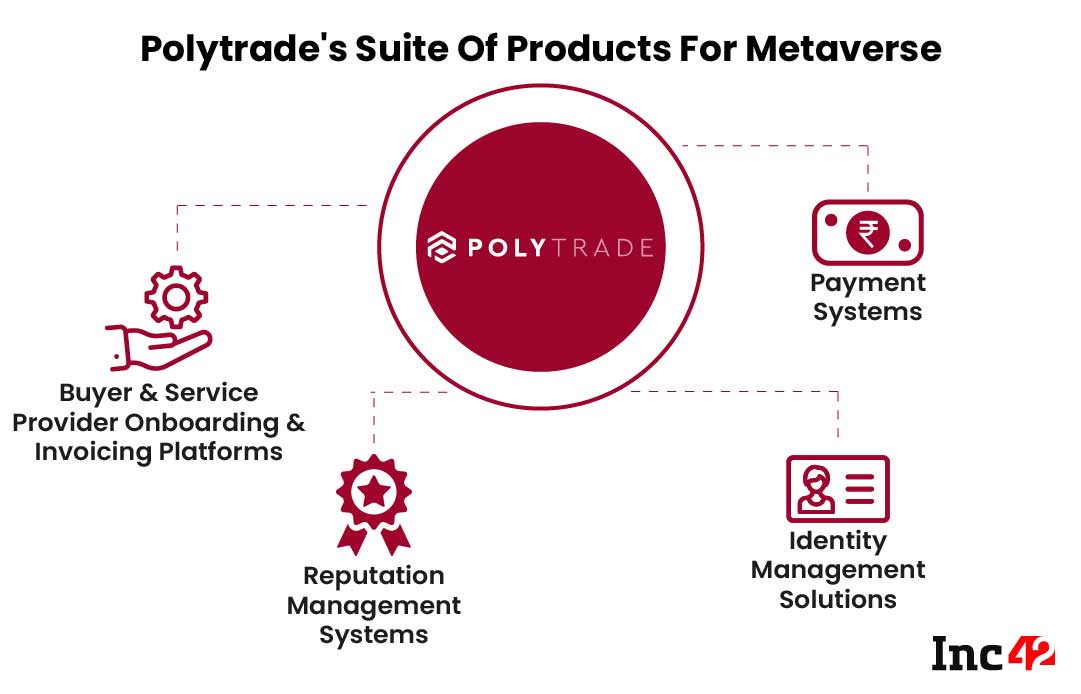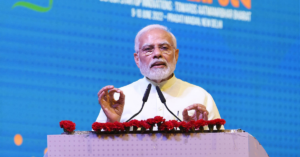The recent news of Punjabi pop singer Daler Mehndi performing on the Metaverse on Republic Day has surely fascinated everyone in India. Mehndi is the first Indian to do so; before him, it was the Canadian singer, Justin Bieber, who had given a metaverse concert.
However, the metaverse is much more than a video technology that gives a virtual world experience. It is an immersive (three-dimensional) virtual reality (VR) world where users can interact with digital objects (avatars or digital representatives of individuals). It coalesces multiple technologies such as VR, augmented reality (AR), 3D hologram, etc. to create a virtual world that is accessible on different gadgets, including smartphones and personal computers.
In simpler words, metaverse mixes the physical world with the digital world. It is real-time, interoperable and decentralised.
What makes the metaverse special is that it brings the imagination to life. Case in point, it has been reported in the western media that Nick Clegg, Facebook’s VP of global affairs, holds his Monday team meetings in the office metaverse, “replete with virtual table and whiteboard”. Clegg had said the metaverse would be a series of interlinked worlds, where a user moves seamlessly from Facebook’s world to Apple’s or Google’s.

Backing that fact, experts have said today’s metaverse is like the early internet. As it evolves, many opportunities will emerge. It is envisioned that metaverse will have many commercial applications including ecommerce, sales and marketing, decentralised finance, crypto businesses, etc.
Commenting on short-term and long-term opportunities in the metaverse space, Piyush Gupta, Founder & CEO, Polytrade, said, “The metaverse as we see is going to be the Internet on steroids”.
He explained that it will also create immense opportunities and challenges. Metaverse will start to be seen as a new channel for customer acquisition and a necessity for customer retention for all brands — physical or digital—as individuals, hooked to immersive experiences, will spend a long time on metaverse.
Resonating the sentiment, Arul Prakash, COO, Polytrade added that metaverse with its persistent nature and immersive experience will occupy the most amount of time of a young user. Adding that the consumer-focussed companies will not have a choice but to be present there and with these companies the B2B focussed enterprises and ecosystem will move there as well.
“There is going to be a huge explosion of services, standards and opportunities. Companies will race towards metaverse to retain and expand their customer base. End of the day it will all be an effective attention economy.” – said Arul Prakash, COO, Polytrade.
Commerce And Business Opportunities On Metaverse
“Projects and companies working on these will greatly direct the path that metaverse will take. Platforms and solutions like Unity, Unreal, Nvidia’s Omniverse will play a pivotal role in speeding things up,” added Gupta.
The scope of metaverse has allowed many tech giants such as Meta (Facebook, till recently), Apple, Nike, Nvidia, Microsoft, Alibaba, Tiktok and more to spend billions of dollars on Metaverse development.

Facebook, an early mover in this space, had said that its profit will fall by $10 Bn in 2021 as it invests heavily in Facebook Reality Labs.
In a previous interview with The Verge, Mark Zuckerberg, the CEO of Meta said, “The metaverse isn’t just virtual reality. It is going to be accessible across all of our different computing platforms.… I think that this is a persistent, synchronous environment where we can be together, which I think is probably going to resemble some kind of a hybrid between the social platforms that we see today, but an environment where you are embodied in it.”
According to reports, Apple CEO Tim Cook on January 27 had said that the company sees a lot of potential in this space and are investing accordingly. Apple has 14,000 AR apps on its App Store and rumours are doing the rounds that the iPhone maker is set to launch AR headset and glasses which could facilitate Apple’s interest in the metaverse.
Microsoft’s ambition in the metaverse is reflected in its CEO Satya Nadella’s comments on earnings call a couple of days ago. “Just like the first wave of the internet allowed everybody to build a website, I think the next wave of the internet will be a more open world where people can build their own metaverse world, whether they are organisations or game developers or anyone else,” he is quoted as saying in media reports.
Revenue-generating opportunities are galore in the metaverse.
Harvard Business Review writes: “From training future surgeons to rolling out product demos to retail employees, there are plenty of business applications. For example, the leadership of tech company Nvidia believes that investing in metaverse simulations of such things as manufacturing and logistics will reduce waste and accelerate better business solutions. And Microsoft is positioning its cloud services to be the fabric of the metaverse, using its Mesh platform to enable avatars and immersive spaces to thread into the collaboration environments, such as Teams, over time. With post-Covid hybrid or remote working environments, many of these more creative virtual business experiences are likely to become even more relevant to how companies connect to their people and to their customers.”
Payments And Transactions On Metaverse
Even as giants are developing metaverse at an astronomical cost, others down the chain are developing products to overcome challenges such as payments and transactions on metaverse.
“Platforms and giants are already working on making transactions easier for everyone and not just tech-savvy users. This is similar to when computers or the internet first came into the picture, and everyone was doubtful whether they will be user friendly, easy to use and more — and now we use them like second nature,” explained Ninad Chhaya, Cofounder & COO, GoPhygital.
It is here that names such as Polytrade, a cryptocurrency and blockchain-based trade financing platform in India, make a difference.
The company is building products specifically targeted around finance, payments and commerce completely on-chain, for enterprises and crypto native businesses.
According to its COO, Prakash, all the investments in the metaverse will start translating into commercial activity in the long term. And increased spending and time will now move from mobile and TV screens to VR headsets.
“We will very soon see that non-essential and non-consumable businesses will start to see their revenue streams from metaverse exceed that of the real world. Newer payment modes, with shorter subscription and sale mechanisms, will evolve, which will operate at extremely shorter durations, say Nike NFT shoe wearable rentals for 15 minutes, rather than months. This creates newer economies and opportunities for brands to look at additional revenue streams,” Prakash said.
Early Birds Stand To Get Clear And Distinct Advantage
According to Brian Trunzo, metaverse lead, Polygon Technology, first movers in metaverse are gaining a tremendous advantage. As with the early days of the internet, people and companies who immersed themselves with the technology first, and who became literate in its burgeoning customs and best practices, stand to gain, he said.
“Think about the influence Amazon and eBay have had on marketplaces. And they continue to reap these rewards 20 years after they helped create this new culture of ecommerce,” he said.
Even as the potential is promising and early movers are poised to reap early-bird advantages, building an organised and scalable metaverse is faced with stiff challenges. Adoption, for instance, is a major issue. Drawing an analogy with the use of mobile phones in the 1990s, Irfan Khan, founder of hypermine.in & hosh.store, said mobile phone hardware was just expensive and bulky and services were not so readily available.
“It was just a complicated situation to be a phone user in those days. A similar situation exists now with the metaverse, it’s too expensive, the experiences are still not real-looking, probably not safe to wear those headsets for too long and so on. I think it will be a few years until we start seeing this go mainstream,” Khan said.
Besides the challenge of adoption, there are serious challenges in payments and transactions which need to be addressed. Polytrade, after realising the acute need for standardisation of financing and commerce-driven transactions with the crypto native businesses, started building completely on-chain products around finance, payments and commerce targeted towards enterprises and crypto native business. It sees major challenges in the metaverse space when it comes to single and multi-party transactions.
Polytrade’s COO said one of the major focus areas is going to be around standardisation and data sharing. Transactions not following the norms of national boundaries and WTO regulations and SOX (The Sarbanes-Oxley Act of 2002) compliance will be a major challenge. Also, the existing mechanisms are unable to categorise, analyse and regulate the transactions in a decentralised world.
According to him, there is an increased need to identify and accredit anonymous and pseudonymous individuals and entities. Conventional credit rating and passport-based identification will fall short, he added. Besides, there is a need for flexibility in the way identification and credibility is evaluated. At the same time, there is also a need for interoperability across different disconnected organisations and entities.
Prakash said Polytrade is building a suite of products that specifically address some of the above-mentioned challenges. He listed them as follows:
Payment Systems
Enterprise focussed payment systems to enable payment and tracking specifically for digital goods like NFTs, returnable/rentable/reusable NFTs.
Identity Management Solutions
The future of on-chain transactions is pseudonymous, not anonymous or fully doxxed. A pseudonymous system means that historical transactions and behaviour analysis of past transactions are not going to be possible until explicit approval of the individuals/entities is obtained.
Reputation Management Systems
Pseudonymous systems will mandatorily need historical performance analysis. As there are more transactions tracked and consolidated, we will be creating a mechanism to rate the service provider and the invoice payer automatically and based on inputs. This overtime bill is akin to credit ratings in real-world systems, helping decide creditworthiness and ease of doing business.
With the metaverse and the onset of web 3.0 transactions, national geographies are no longer considered, let alone state or regional or provincial boundaries. The whole mechanism of taxation will evolve.
Buyer And Service Provider Onboarding & Invoicing Platforms
Building a set of tools that will prepare and onboard service providers and buyers of services is essential for the efficient working of this whole space. Invoice management solution will be the foundation to build data and insights for all decentralised organisation transactions.
Even as the payment systems are being built and challenges gradually addressed, the begging question remains—the user experience.
It is feared that the present currency system is feasible only for tech-savvy users. How about users with limited knowledge of cryptocurrencies and blockchain? There are no quick solutions here, says Prakash even as he stressed that building a customer and user experience, which acts as a smooth ramp for new users, is going to be a focus for the next five to eight years. At present, the whole industry is focussed on utility and functionality. As competition increases and the uniqueness of the solution reduces, companies and protocols will start focussing on usability and user experience.
Today’s situation is similar to that in the late 90s when users went for training classes to know how to use the internet. Now, internet use has blended into people’s lifestyles, more so after the wider adoption of smartphones. “The same is sure to happen here,” Prakash said.
Business Likely To Grapple with Credibility Issues
As businesses embrace the metaverse, they will have to work hard to gain credibility. It cannot be denied that credibility is gained with time. “Until then we will be working on overlapping areas of web 2.0 models and web 3.0 which enable old world digital data to be transported into the web 3.0 realm,” said Prakash.
Credit ratings, financial performance and the present-day economy will gradually enter the web 3.0 economy.
But over time, native systems will be built which have no implication of real-world activities on the ratings and credibility in the metaverse, according to Prakash.
Adding to that sentiment, Ninad Chhaya, cofounder & COO, GoPhygital said that going forward the common factor that will dictate the success of a metaverse is also the ease of logging into it, no matter who owns it.
“What really comes into play here is security. My identity needs to be secure, my privacy needs to be protected. I should be able to go from one metaverse to the other seamlessly. No matter who owns the backend tech, the experience needs to be such that the challenges are almost negligible when I go from a gaming metaverse to a news metaverse to an educational or financial news metaverse,” he added.
Chhaya explained that everyone has a unique identity and even in the virtual world this one identity should enable users to interact across these metaverses — which today is still in formation because these are the early days. “It will be a collective responsibility of all the stakeholders involved in the ecosystem to ensure the privacy and security of every user stepping into the metaverse. That will be the major challenge for now,” he further explained.
Regulations And Good Governance Will Play A Significant Role
The metaverse we have seen today is only the early version. As Meta and others develop full-scale metaverses, operate and scale it up, regulatory and governance issues that deserve serious attention are bound to crop sooner than later.
To cite an example of the issues anticipated, there is every possibility of unwanted duplication of a digital asset like NFT. The challenge is establishing a connection between fiat and virtual currency is another example. Intellectual property rights and data privacy will be big issues too. Regulating competition is yet another problem that would come up.
Piyush Gupta of Polytrade, agreed with Chhaya adding that the sooner regulations catch up and provide the impetus to growth, the better it is for nation-states to ride the web 3.0 solutions.
A conducive environment needs to be created through advanced and detailed discussions with industry leaders and counterparts across economic and national forums. Bodies such as the Internet and Mobile Association of India (IAMAI) are pivotal in providing the right impetus to these focus areas, Gupta said.
When metaverse touches the daily lives, there will be new activities that have legal and compliance aspects. It is hard now to judge the overall comprehensive implications.
In India, it might take time to arrive at the final decision. According to Gupta, the government usually seems to agree and execute what the majority of the population demands rather than what satisfies short term political agendas. “So, I am very hopeful on a futuristic outlook to regulations by India.”
Data protection, in particular, will be a key issue related to the metaverse. Users are likely to spend a large amount of time on metaverse and their behaviour will also be captured. In addition to the large-scale collection of personal data, individuals’ movements and habits will be collated.
Decentralisation is the very philosophy of metaverse and therefore it would be crucial to fix the responsibility for data processing and also in case of data loss.
When asked how the existing mechanism can be developed to protect the assets of both users and businesses, Prakash of Polytrade seemed a little perturbed, saying “The genesis of metaverse and web 3.0 is to remove the risks of data privacy and security. In the metaverse, the control of these data points will be in the hands of the users directly. The design of systems and applications will intuitively have to accommodate this, to stand the test of decentralisation.”
“Whether Metaverse becomes an exponential change or a mere incremental change to the internet, completely depends on how we incorporate the core elements of decentralization in the design for the metaverses to come” he added.
A Single Metaverse Or Multiple Metaverses? What Is The Future?
“Once people start using AR in their smartphones — for games, news or anything else — the adoption of metaverse will automatically increase multifold. I think, this will one day become an integral part of our day to day life and this is where the one identity and seamlessness of hopping on different metaverse will become important” says Chhaya.
Tech giants as of today are setting aside billions of dollars for developing their own versions of the metaverse. Will they at one point come together and build a unified metaverse? It may look like a far-fetched idea for now. The future seems to be of interoperable multiple metaverses. Polytrade’s Gupta affirmed this saying that there will always be multiple metaverses, each trying to solve a certain purpose or attract a certain set of users.
“From a technical standpoint, this is exactly where interoperability standards will come into play and have to evolve,” said Prakash.
Over time, unifying standards will be created to enable porting data, goods and assets across different metaverses. A user would be able to carry his credibility and reputation from one metaverse to another, and gradually the space will merge towards a standard for the same.
“We are still in the early 1990s of the internet when it comes to web 3.0. The space is young and much to evolve. The next decade will decide the direction for this future. All we can hope is that regulations keep up and provide a direction to innovation, rather than try to curtail and contain it,” Prakash put it succinctly.










